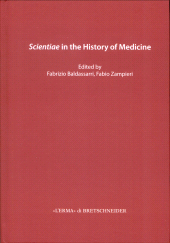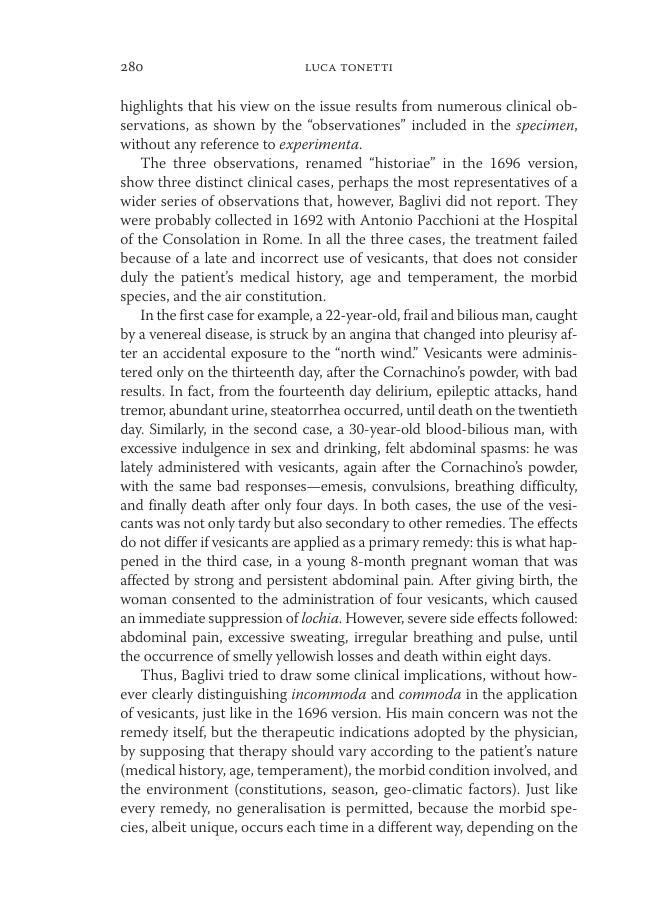Testing drugs in Giorgio Baglivi's dissertation on Vesicants
P. 271-288
Discussions on the medical use of vesicants—a remedy able to induce redness and blisters upon application to the skin—attracted the attention of early-modern physicians due to the severe side effects on the body. Helmontian physicians in particular claim that vesicants are always harmful and, therefore, must be prohibited. Giorgio Baglivi (1668-1707), however, believes that vesicants could be useful under certain conditions. His De usu et abusu vesicantium [On the use and misuse of vesicants] aims at analysing exactly the cases in which such an application is permitted, and the cases in which it is not, and to explain how this remedy works.
For Baglivi experimentation on living animals by means of infusory surgery plays a pivotal role in testing the efficacy of drugs or trying and discovering new ones. In this paper, I will provide a short overview of this undeservedly neglected dissertation, by describing Baglivi's experiments on vesicants and their implications for his medical perspective. [Publisher's text]
-
Chapitres du même volume (disponibles individuellement)
-
Informations



